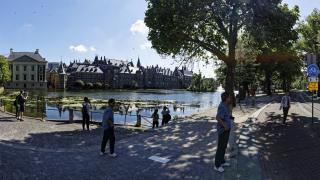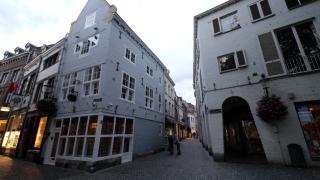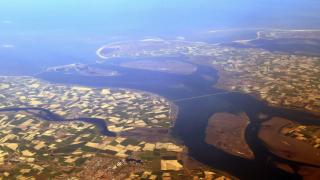Euro Essentials: What to Expect
The euro (EUR, €) is the only legal currency in the Netherlands. Dutch shops, restaurants, and public transport accept only euros. The Netherlands adopted the euro in January 2002, replacing the Dutch guilder (NLG). Guilder notes and coins are no longer accepted or exchanged.
Banknotes in circulation:
- €5, €10, €20, €50, €100, €200, €500 (though €200 and €500 are rare)
Coins in use:
- 1, 2, 5, 10, 20, 50 cent coins
- €1 and €2 coins
Dutch euro coins feature a portrait of King Willem-Alexander or Queen Beatrix on one side. Banknotes look the same across all eurozone countries. Most daily purchases, such as coffee (€3), tram tickets (€3.40), or a museum entry (€20), are paid in euros. Foreign currencies like US dollars or British pounds are not accepted in Dutch shops. ATMs dispense euros only. Currency exchange offices are found at Schiphol Airport and major train stations. Always check for ATM withdrawal fees with your bank before travel.
Paying Your Way: Cash vs Cards
Debit and credit cards are widely accepted in the Netherlands. Most Dutch shops, restaurants, and public transport accept cards. Maestro and V-Pay debit cards are the most common. Visa and Mastercard credit cards are accepted in larger stores, hotels, and tourist areas. Some small shops, cafés, and market stalls may only accept Dutch debit cards (pin only). Many supermarkets, including Albert Heijn, do not accept credit cards. Contactless payments are standard. Apple Pay and Google Pay work in most places. Some public toilets require card-only payment. Street markets and small bakeries may prefer cash, especially for purchases under €5. ATMs (geldautomaten) are common in cities and towns. ING, ABN AMRO, and Rabobank operate most machines. Foreign cards may incur a withdrawal fee of €2-€4 per transaction. Some ATMs only allow withdrawals in €50 notes. Carry small denominations (€5, €10, €20) and coins for convenience. Coins are needed for lockers, bike rentals, or tipping. Many taxis accept cards, but some require cash for short rides. Always check payment options before ordering or boarding. Cashless payments are increasing, but cash is still useful in rural areas and at local events.
Getting Euros: Exchange & ATMs
Euros are the only accepted cash in the Netherlands. ATMs (geldautomaten) are widely available in cities, towns, and at Schiphol Airport. Most Dutch ATMs accept international cards with Maestro, Cirrus, Visa, or Mastercard logos. ATMs dispense euros in €10, €20, and €50 notes. Withdrawal limits are usually €250–€500 per transaction. Some Dutch ATMs charge a local fee of €2–€4 for foreign cards. Your home bank may add extra fees. Use ATMs attached to major banks like ABN AMRO, ING, or Rabobank for better rates. Currency exchange offices (GWK Travelex) are found at Schiphol, Amsterdam Centraal, and major city centers. Airport and train station exchanges offer less favorable rates and higher commissions. Avoid exchanging large amounts of cash—pickpocketing risk is higher in tourist areas. Most Dutch shops prefer card payments, so only small amounts of cash are needed. Use currency conversion apps (e.g., Wise, Revolut) to check real-time euro rates. Always choose to be charged in euros, not your home currency, to avoid dynamic currency conversion fees. Dutch banks do not exchange foreign cash for non-customers. Traveler’s cheques are not accepted anywhere.
Dutch payment culture is highly cashless. Most locals use debit cards, especially Maestro, for daily purchases. Many supermarkets, such as Albert Heijn and Jumbo, do not accept credit cards. Some cafés, restaurants, and museums are 'pin only'—no cash accepted. Look for signs reading 'alleen pinnen' or 'pin only' at entrances. Tikkie is a popular Dutch app for splitting bills. Locals send payment requests via WhatsApp or SMS. Expect to use Tikkie for group dinners or drinks. Contactless payments are standard, even for small amounts like €1.50 for coffee. Apple Pay and Google Pay are accepted in many places. Some small shops accept only Dutch debit cards (bankpas). Foreign cards may be declined at ticket machines, parking meters, or vending machines. Always carry a small amount of euro coins for public toilets or markets. If your card is not accepted, ask for the nearest ATM ('geldautomaat'). Avoid payment pitfalls by checking accepted cards before ordering. Never assume credit cards work everywhere. In rural areas, cash may be needed for small purchases. Plan ahead for cashless venues and local payment habits.
Smart Money Moves: Traveler Tips
Check with your bank about Dutch ATM fees before departure. Some Dutch ATMs charge up to €4 per withdrawal. Many Dutch banks do not accept foreign cards at all ATMs. ING, ABN AMRO, and Rabobank are the most reliable for international cards.
Carry a mix of payment options in the Netherlands:
- Cash (euros): Needed for street markets, public toilets (€0.50–€1), lockers, and some vending machines.
- Debit card: Maestro or V-Pay works best. Some shops do not accept Visa/Mastercard.
- Credit card: Useful for hotels and car rentals. Not always accepted in supermarkets or train stations.
- Mobile wallet: Apple Pay and Google Pay are accepted in many shops, but not everywhere.
Keep small change:
- Public toilets at Amsterdam Centraal and Schiphol require coins.
- Lockers at museums and stations often need €1 or €2 coins.
Be alert for pickpockets in Amsterdam, Rotterdam, and The Hague. Busy markets and trams are common spots.
Useful apps:
- Wise and Revolut for real-time euro conversion.
- Splitwise for group expense tracking.
- 9292 for public transport costs in euros.












